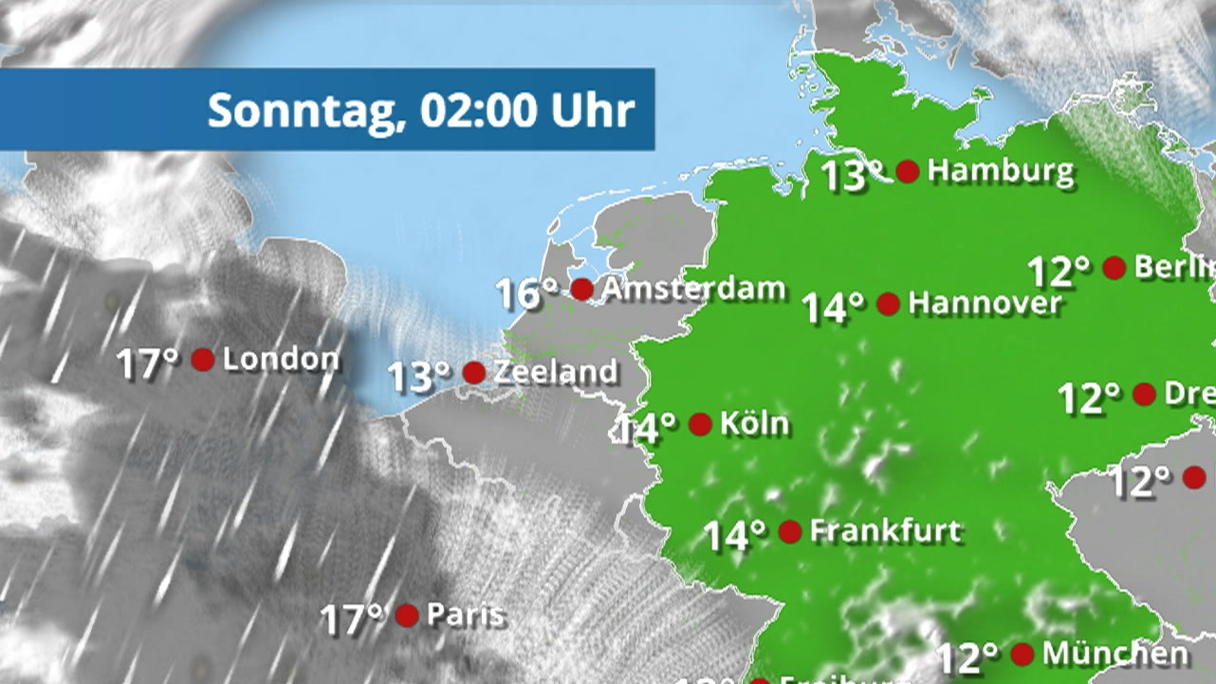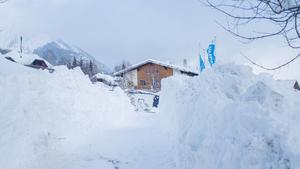
With the flat pressure field comes a flat temperature field (see Figure 2, which shows global maps of temperature, pressure, and a measure of cloudiness, for a single day). In the tropics, the Coriolis force is weak, the highs and lows flatten out, and global pressure maps show almost no structure - apart from the occasional tropical cyclone. Strong temperature contrasts - fronts - form where the highs and lows push warm air up against cold air, and clouds and rain tend to form where they push air upwards. These wave patterns go through cycles of growth and decay that we understand, and that computer models are able to simulate accurately.

While being pushed along by the jet stream, they often arrange themselves into alternating high-low patterns in the east-west direction, sometimes referred to as "waves". These highs and lows - the weather systems of the extratropics - evolve in a somewhat predictable way. By preventing this, the Coriolis force allows the highs and lows to exist for a long time. The wind would equalize the pressure field, flowing out of highs and into lows and making the pressure horizontally uniform. If that were to happen, the highs and lows wouldn't last long. If there were no Coriolis force, the wind would simply blow from high to low pressure, across the isobars. In the northern hemisphere, the wind goes clockwise around highs and counterclockwise around lows opposite in the southern. The Coriolis force makes the wind blow approximately parallel to the isobars, or lines of constant pressure. At higher latitudes, where the rotation axis doesn't make too great an angle to the vertical, the Coriolis force plays a big role in determining which way the wind blows. Rotation and the Coriolis ForceThe orientation of the tropics relative to the Earth's rotation axis also complicates tropical weather prediction. another - very rainy weather over a large region, completely clear skies, or anything in between - sometimes differ only in subtle ways. The circumstances that lead to one outcome vs. This process can feed on itself to produce a large complex of such storms that maintains rainy weather over a period of days and a region thousands of km in extent, sometimes moving coherently across the tropics and generating new storms as it moves (Mapes & Houze 1993). Sometimes, though, the cooling effect as well as the weight of the rain itself can create a downdraft strong enough to create turbulence that in turn lifts nearby warm, humid air, making a new updraft (Figure 1). The evaporating rain cools the air near the surface, so that it isn't warm enough to rise into a new cloud.

Sometimes a tropical shower ends quickly, as the clouds and falling rain evaporate. If enough water condenses, the cloud droplets can become large enough to fall as rain.

The latent heat of the condensation warms the air, causing it to become still warmer, and allowing the updraft to rise further. If air rises - as it can, for example, if it is a little warmer and thus lighter than the air around it - it will expand and cool, eventually causing some of the water vapor in it to condense into tiny liquid droplets, forming a cloud. Temperature and pressure both drop quickly with altitude, in the tropics as elsewhere on Earth. As the sun shines strongly on the tropics - particularly on the warm oceans which have an effectively infinite amount of water to evaporate into the air - the overlying atmosphere becomes very humid. Heat, Moisture, Clouds and RainThe higher the temperature, the more water vapor can be in the air without condensing. On the other hand, temperature is easily forecast in the tropics, because it doesn't change much. Because of these differences, clouds and rain are more difficult to forecast in the tropics than at higher latitudes. Because of these two factors, clouds and rain storms in the tropics can occur more spontaneously compared to those at higher latitudes, where they are more tightly controlled by larger-scale forces in the atmosphere. And, the vertical direction (up, as one stands on the Earth's surface) is perpendicular to the Earth's axis of rotation at the equator, while the axis of rotation and the vertical are the same at the pole this causes the Earth's rotation to influence the atmospheric circulation more strongly at high latitudes than low. The sun shines more directly on the tropics than on higher latitudes (at least in the average over a year), which makes the tropics warm (Stevens 2011). There are two reasons why tropical weather is different from that at higher latitudes.


 0 kommentar(er)
0 kommentar(er)
